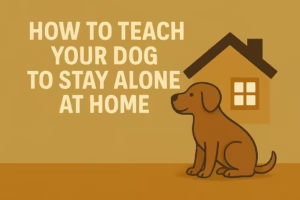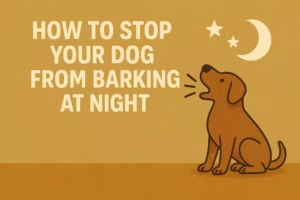Dog anxiety is a common issue that affects many dogs of all breeds and ages. It can manifest in different ways, such as destructive behavior, excessive barking, or even aggression. Dogs can experience anxiety for various reasons, including separation anxiety, fear of loud noises, or changes in their environment.
Understanding the underlying causes of dog anxiety is essential to finding effective solutions. Some breeds are more prone to anxiety than others, and certain life events can trigger anxiety in dogs. Preventing anxiety in dogs involves a combination of socialization, training, and environmental management. Natural solutions such as exercise, calming music, and aromatherapy can also help alleviate anxiety in dogs.
Professional interventions like behavior modification and medication can be effective in treating dog anxiety. However, long-term management of anxiety requires a comprehensive approach that addresses the root causes of anxiety. By identifying triggers and implementing strategies to reduce stress, dog owners can help their dogs live a calmer and more content life.
Key Takeaways
- Understanding the underlying causes of dog anxiety is essential to finding effective solutions.
- Preventing anxiety in dogs involves a combination of socialization, training, and environmental management.
- Professional interventions like behavior modification and medication can be effective in treating dog anxiety.
Understanding Dog Anxiety
Dogs, like humans, can experience anxiety. Anxiety is a normal response to stress, but when it becomes excessive, it can affect a dog’s quality of life. Understanding the causes of anxiety and recognizing the signs can help pet owners provide the right care and support to their furry friends.
Causes of Anxiety
There are several reasons why a dog may experience anxiety. Some of the most common causes include:
- Fear: Dogs can experience anxiety due to fear of loud noises, strange people or animals, visual stimuli like hats or umbrellas, new environments, or unfamiliar objects.
- Separation: Dogs can become anxious when left alone for extended periods of time. This is known as separation anxiety, and it can cause destructive behavior, excessive barking, and other unwanted behaviors.
- Aging: As dogs age, they may experience anxiety due to physical changes, cognitive decline, and changes in their environment.
Recognizing the Signs
Recognizing the signs of anxiety in dogs is important to provide timely care and support. Some common signs of anxiety in dogs include:
- Excessive barking: Dogs may bark excessively when they are anxious or stressed.
- Destructive behavior: Dogs may chew on furniture, shoes, or other objects when they are anxious.
- Panting: Dogs may pant excessively when they are anxious or stressed.
- Trembling or shaking: Dogs may tremble or shake when they are anxious or stressed.
- Avoidance: Dogs may avoid people or situations that make them anxious.
It is important to note that these signs may also be indicative of other health issues, so it is essential to consult a veterinarian to rule out any underlying medical conditions.
Breeds Prone to Anxiety
While all dogs can experience anxiety to some degree, certain breeds are more prone to it than others. Understanding which breeds are more susceptible to anxiety can help dog owners better prepare for and manage their pet’s anxiety.
Cavalier King Charles Spaniel
Cavalier King Charles Spaniels are known for being affectionate and loyal companions. However, they are also prone to separation anxiety, which can cause them to become destructive or vocal when left alone.
Labrador Retriever
Labrador Retrievers are one of the most popular dog breeds in the world, known for their friendly and outgoing personalities. However, they are also prone to general anxiety and separation anxiety, which can manifest in destructive behavior or excessive barking.
Bichon Frise
Bichon Frises are small, fluffy dogs known for their playful and curious nature. However, they can also be prone to anxiety, particularly when left alone for long periods of time.
German Shepherd
German Shepherds are intelligent and loyal dogs that are often used as police or military dogs. While they make excellent companions, they are also prone to anxiety, particularly when they are not properly socialized or trained.
Poodle
Poodles are known for their intelligence, trainability, and hypoallergenic coats. However, they are also prone to anxiety, particularly when they are not given enough exercise or mental stimulation.
Understanding which breeds are more prone to anxiety can help dog owners better prepare for and manage their pet’s anxiety. It is important to note, however, that every dog is unique and may experience anxiety differently. If you suspect that your dog is experiencing anxiety, it is important to consult with a veterinarian or professional dog trainer for guidance on how to best manage their anxiety.
Preventing Dog Anxiety
There are several things that dog owners can do to prevent anxiety in their furry friends. Creating a safe environment and proper training are two effective methods.
Creating a Safe Environment
Dogs thrive in a safe environment that is free from stressors and triggers that can cause anxiety. As such, it’s important to create a safe and comfortable living space for your dog. This can include providing a cozy bed, toys, and a designated space for your dog to retreat to when they feel overwhelmed.
Additionally, it’s important to keep your home clean and organized. Clutter and mess can be unnerving for dogs, so keeping a tidy living space can help to reduce their anxiety levels.
Proper Training
Proper training is crucial for preventing anxiety in dogs. This includes socialization, obedience training, and desensitization to triggers that can cause anxiety.
Socialization is the process of exposing your dog to different people, animals, and environments at a young age. This can help to prevent anxiety caused by unfamiliar situations later in life.
Obedience training teaches your dog basic commands and helps to establish a bond between you and your furry friend. This can help to reduce anxiety by providing a sense of structure and predictability in your dog’s life.
Desensitization involves gradually exposing your dog to triggers that cause anxiety in a controlled and safe environment. This can help to reduce their anxiety levels over time.
By creating a safe environment and providing proper training, dog owners can help to prevent anxiety in their furry friends.
Natural Solutions for Anxiety
When it comes to treating dog anxiety, there are a few natural solutions that can help alleviate symptoms. These solutions include exercise and play, and dietary changes.
Exercise and Play
Exercise and play are great ways to help dogs burn off excess energy and reduce anxiety. Taking a dog for a walk or run can help them release pent-up energy and reduce stress. Playing fetch, tug-of-war, or other games can also help dogs feel more relaxed and content.
In addition to physical exercise, mental stimulation is also important for reducing anxiety. Puzzle toys, treat-dispensing toys, and training sessions can all help keep dogs mentally stimulated and reduce anxiety.
Dietary Changes
Diet can also play a role in reducing dog anxiety. Certain foods and supplements can help calm dogs and reduce stress. For example, foods that are high in tryptophan, such as turkey, can help increase serotonin levels in the brain, which can promote feelings of calm and relaxation.
Other supplements that can help reduce anxiety in dogs include chamomile, valerian root, and passionflower. These supplements can be found in various forms, including treats, chews, and drops.
In addition to adding calming foods and supplements to a dog’s diet, it’s also important to avoid feeding them foods that can increase anxiety. Foods that are high in sugar or caffeine can increase hyperactivity and anxiety in dogs, so it’s best to avoid these types of foods.
By incorporating these natural solutions into a dog’s routine, owners can help reduce anxiety and promote a calm and content demeanor.
Professional Interventions
When a dog’s anxiety is severe enough to interfere with their quality of life, it may be time to consider professional interventions. There are two main types of professional interventions for dog anxiety: behavioral therapy and medication options.
Behavioral Therapy
Behavioral therapy for dogs with anxiety typically involves working with a professional dog trainer or animal behaviorist to develop a plan to help the dog overcome their fears. This may include desensitization and counterconditioning techniques, which involve gradually exposing the dog to the source of their anxiety in a controlled environment while providing positive reinforcement.
Another common technique is called systematic desensitization, which involves gradually exposing the dog to the source of their anxiety while they are in a relaxed state. This can help the dog learn to associate the source of their anxiety with a calm state of mind.
Medication Options
In some cases, medication may be necessary to help a dog with severe anxiety. There are several types of medications that may be prescribed for dogs with anxiety, including:
- Antidepressants: These medications can help regulate the levels of serotonin in the brain, which can help reduce anxiety in dogs.
- Benzodiazepines: These medications can help reduce anxiety in dogs by increasing the levels of GABA in the brain, which has a calming effect.
- Beta-blockers: These medications can help reduce the physical symptoms of anxiety in dogs, such as rapid heart rate and shaking.
It’s important to note that medication should always be used in conjunction with behavioral therapy, as medication alone is not a long-term solution for anxiety in dogs. A veterinarian should always be consulted before starting a medication regimen for a dog with anxiety, as some medications can have side effects or interact with other medications.
Long-Term Management of Dog Anxiety
Dogs with anxiety issues require long-term management to help them feel calm and content. In this section, we will discuss two essential components of long-term management.
Consistent Routines
Consistency is critical when managing dog anxiety. Dogs thrive on routine, and any changes to their daily schedule can cause stress and anxiety. Therefore, it’s essential to establish a consistent routine for your furry friend and stick to it as much as possible.
A consistent routine should include regular feeding times, exercise, and playtime. Also, try to keep their sleeping and waking times consistent. If you need to make a change to their routine, try to do it gradually over several days to minimize stress.
Ongoing Training
Ongoing training is another vital component of long-term management of dog anxiety. Training can help your dog feel more confident and less anxious in various situations. You can work with a professional trainer or do it yourself at home.
One training technique that can help reduce anxiety is desensitization. This technique involves gradually exposing your dog to the source of their anxiety in a controlled environment. For example, if your dog is anxious around other dogs, you can start by exposing them to a calm, well-behaved dog and gradually work your way up to more challenging situations.
Another training technique is counterconditioning, which involves replacing the negative association with a positive one. For example, if your dog is anxious around strangers, you can give them a treat every time a stranger approaches, so they start to associate strangers with something positive.
In conclusion, consistent routines and ongoing training are essential components of long-term management of dog anxiety. By establishing a routine and using training techniques, you can help your furry friend feel calm and content.
Conclusion
Dog anxiety is a common issue that can be caused by a variety of factors, including lack of socialization, fear, and separation anxiety. Fortunately, there are many solutions available to help calm and soothe anxious dogs.
One effective solution is to provide a safe and comfortable environment for the dog. This can include creating a designated space for the dog to retreat to, such as a crate or a cozy bed. Additionally, providing plenty of toys and activities can help keep the dog distracted and calm.
Another solution is to establish a routine for the dog. This can include feeding, walking, and playing with the dog at the same times each day. This can help the dog feel more secure and less anxious.
In some cases, medication or professional training may be necessary to help manage the dog’s anxiety. It is important to consult with a veterinarian or a professional dog trainer to determine the best course of action for the dog.
Overall, with patience, consistency, and the right solutions, it is possible to help an anxious dog become calm and content.
Frequently Asked Questions
How can I treat separation anxiety in my dog?
Separation anxiety is a common issue among dogs, and it can be challenging to treat. However, there are several things you can do to help your dog feel more comfortable when you are not around. One of the most effective ways to treat separation anxiety is to gradually get your dog used to being alone. Start by leaving your dog alone for short periods, then gradually increase the time you spend away. You can also try leaving your dog with a special toy or treat that they only get when you are gone.
What are the symptoms of dog anxiety?
Dog anxiety can manifest in several different ways, including excessive barking, destructive behavior, shaking, panting, and pacing. Some dogs may also become aggressive or show signs of depression. If you notice any of these symptoms in your dog, it is essential to consult with your veterinarian.
What can I give my dog for anxiety?
It is not recommended to give your dog any medication or supplement without consulting with your veterinarian first. While there are several over-the-counter products that claim to treat anxiety in dogs, many of them are not effective, and some can even be harmful. Your veterinarian can recommend safe and effective treatments based on your dog’s specific needs.
How can I calm my dog at night?
If your dog has trouble sleeping at night, there are several things you can do to help them relax. Make sure your dog gets plenty of exercise during the day, so they are tired at night. You can also try playing calming music or leaving a TV on low volume to provide background noise. Additionally, you can create a comfortable sleeping environment for your dog by providing a cozy bed and a warm blanket.
What are some natural ways to treat separation anxiety in dogs?
There are several natural remedies that can help reduce anxiety in dogs. Some of these include essential oils, herbal supplements, and calming music.
However, it is essential to consult with your veterinarian before trying any natural remedies, as some can be harmful to dogs.
File size
What options do vets have for treating dog anxiety?
Veterinarians have several options for treating anxiety in dogs, including prescription medication, behavioral therapy, and training. Your veterinarian can recommend the best treatment plan based on your dog’s specific needs. It is essential to follow your veterinarian’s instructions carefully and to attend all follow-up appointments to ensure the best possible outcome for your dog.








